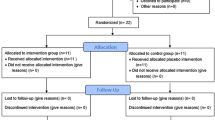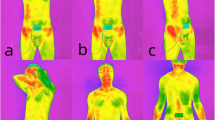Abstract
It is widely known that electrotherapy decreases the pain by mechanical and chemical stimulation. However, there have been no studies to find the change in the sex hormones by acupoint electrical stimulation for healthy rehabilitation. This study examines the effects that electrical stimulation of volunteers’ meridian points has on their levels of total testosterone, dehydroepiandrosterone sulfate (DHEA-S), follicle stimulating hormone (FSH), luteinizing hormone (LH), prolactin, and other erectile dysfunction-related substances. A serum analysis showed that electrical stimulation using a 1 Hz current significantly increased the subjects’ concentrations of total testosterone and DHEA-S; however, there were no significant differences in the concentrations of FSH, LH, and prolactin in subjects treated with electrical stimulation. These results suggest that the increased responsiveness to electrical stimulation, particularly a current of 1 Hz continue type, may be partially related to an improvement in sexual functions.
Similar content being viewed by others
References
Pohl, H., DeRosa, C. & Holler, J. Public health assessment for dioxins exposure from soil. Chemosphere. 31, 2437–2454, 1995.
Grajewski, B. et al. Evaluation of reproductive function among men occupationally exposed to a stilbene derivative: I. Hormonal and physical status. Am. J. Ind. Med. 29, 49–57, 1996.
Freeman, K. Arsenic and erectile dysfunction: drinking contaminated well water increases risk. Environ. Health Perspect. 116, A172, 2008.
Egeland, G. M. et al. Total serum testosterone and gonadotropins in workers exposed to dioxin. Am. J. Epidemiol. 139, 272–281, 1994.
Howell, S. & Shalet, S. Testosterone deficiency and replacement. Horm. Res. 56Suppl 1, 86–92, 2001.
Shabsigh, R. The effects of testosterone on the carverous tissue and erection. World J. Urol. 15, 21–26, 1997.
Yildrim, M. K. et al. Effects of castration on adrenergic, cholinergic and nonadrenergic, noncholinergic responses of isolated corpus cavernosum from rabbit. Br. J. Urol. 79, 964–970, 1997.
Reilly, C. M., Stopper, V. S. & Mills, T. M. Androgens modulate the α-adrenergic responsiveness of vascular smooth muscle in the corpus carvernosum. J. Androl. 18, 26–31, 1997.
Palese, M. A., Crone, J. K. & Burnett, A. L. A castrated mouse model of erectile dysfunction. J. Androl. 24, 699–703, 2003.
Korenman, S. G. Clinical review 71: Advances in the understanding and management of erectile dysfunction. J. Clin. Endocrinol. Metab. 80, 1985–1988, 1995.
Spark, R. F., White, R. A. & Connolly, P. B. Impotence is not always psychogenic. Newer insights into hypothalamic-pituitary-gonadal dysfunction. JAMA. 243, 750–755, 1980.
Maatman, T. J. & Montague, D. K. Routine endocrine screening in impotence. Urology 27, 499–502, 1986.
Zietz, B. et al. Association of increased C-peptide serum levels and testosterone in type 2 diabetes. Eur. J. Intern. Med. 11, 322–328, 2000.
Zhang, X. H. et al. Testosterone restores diabetes-induced erectile dysfunction and sildenafil responsiveness in two distinct animal models of chemical diabetes. J. Sex Med. 3, 253–264, 2006.
Ebeling, P. & Koivisto, V. A. Physiological importance of dehydroepiandrosterone. Lancet 343, 1479–1481, 1994.
Reiter, W. J. et al. Serum dehydroepiandrosterone sulfate concentrations in men with erectile dysfunction. Urology 55, 755–758, 2000.
Hall, R. C. & Hall, R. C. Abuse of supraphysiologic doses of anabolic steroids. South Med. J. 98, 550–555, 2005.
Anis, T. H. et al. Chronic lead exposure may be associated with erectile dysfunction. J. Sex Med. 4, 1428–1434, 2007.
Li, D. K. et al. Relationship between urine bisphenol-A level and declining male sexual function. J. Androl. 31, 500–506, 2010.
Schover, L. R. & von Eschenbach, A. C. Sexual and marital relationships after treatment for nonseminomatous testicular cancer. Urology 25, 251–255, 1985.
Mehik, A. et al. Fears, sexual disturbances and personality features in men with prostatitis: a population-based cross-sectional study in Finland. BJU. Int. 88, 35–38, 2001.
Buvat, J. & Lemaire, A. Endocrine screening in 1,022 men with erectile dysfunction: clinical significance and cost-effective strategy. J. Urol. 158, 1764–1767, 1997.
Wanachiwanawin, W. et al. Prevalence and clinical significance of hepatitis C virus infection in Thai patients with thalassemia. Int. J. Hematol. 78, 374–378, 2003.
Cai, S. X. et al. Subjective symptom increase among dry-cleaning workers exposed to tetrachloroethylene vapor. Ind. Health. 29, 111–121, 1991.
Carey, P. O., Howards, S. S. & Vance, M. L. Transdermal testosterone treatment of hypogonadal men. J. Urol. 140, 76–79, 1988.
Arver, S. et al. Improvement of sexual function in testosterone deficient men treated for 1 year with a permeation enhanced testosterone transdermal system. J. Urol. 155, 1604–1608, 1996.
Zheng, X. F. & Li, P. Study on effects of acupuncture combined with medication on reproductive endocrines in the patient of PADAM. Zhongguo. Zhen. Jiu. 27, 333–335, 2007
El-Sakka, A. I., Sayed, H. M. & Tayeb, K. A. Androgen pattern in patients with type 2 diabetes-associated erectile dysfunction: impact of metabolic control. Urology 74, 552–559, 2009.
Tsujita, M. & Ichikawa, Y. Substrate-binding region of cytochrome P-450SCC (P-450 XIA1). Identification and primary structure of the cholesterol binding region in cytochrome P-450SCC. Biochim. Biophys. Acta. 1161, 124–130, 1993.
Liu, W. H. & Lo, C. K. Production of testosterone from cholesterol using a single-step microbial transformation of Mycobacterium sp. J. Ind. Microbiol. Biotechnol. 19, 269–272, 1997.
Snyder, P. J. & Lawrence, D. A. Treatment of male hypogonadism with testosterone enanthate. J. Clin. Endocrinol. Metab. 51, 1335–1339, 1980.
Leonard, M. P., Nickel, C. J. & Morales, A. Hyperprolactinemia and impotence: why, when and how to investigate. J. Urol. 142, 992–994, 1989.
Clayton, R. N. Mechanism of GnRH action in gonadotrophs. Hum. Reprod. 3, 479–483, 1988.
Lambert, A., Talbot, J. A., Anobile, C. J. & Robertson, W. R. Gonadotrophin heterogeneity and biopotency: implications for assisted reproduction. Mol. Hum. Reprod. 4, 619–629, 1998.
Richards, J. S. et al. Novel signaling pathways that control ovarian follicular development, ovulation, and luteinization. Recent Prog. Horm. Res. 57, 195–220, 2002.
Kim, J. H. et al. Noxiousness of hypertension-related norepinephrine and upregulation of norepinephrine induced by high intensity electrical stimulation in healthy volunteers. J. Phys. Ther. Sci. 24, 795–800, 2012.
Urban, R. J. et al. Specific regulatory actions of dihydrotestosterone and estradiol on the dynamics of FSH secretion and clearance in humans. J. Androl. 12, 27–35, 1991.
Author information
Authors and Affiliations
Corresponding author
Rights and permissions
About this article
Cite this article
Kim, J. Effects of low frequency electrical stimulation on the change of male sex hormones in normal men. Toxicol. Environ. Health Sci. 5, 20–25 (2013). https://doi.org/10.1007/s13530-013-0151-z
Received:
Revised:
Accepted:
Published:
Issue Date:
DOI: https://doi.org/10.1007/s13530-013-0151-z




